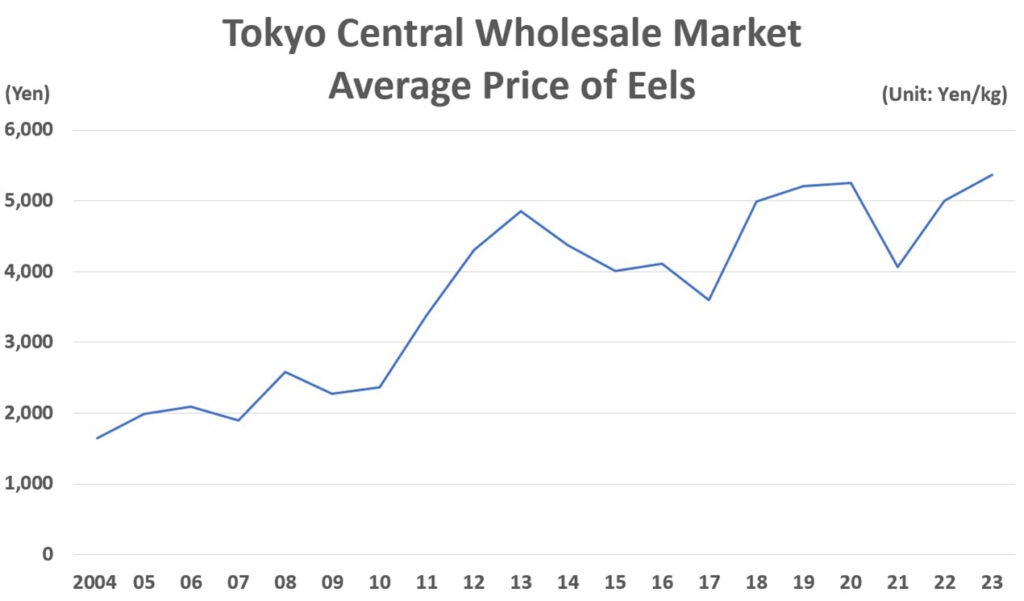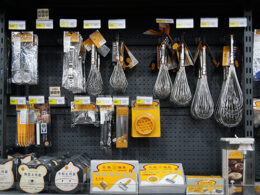With eel prices in Japan reaching unprecedented heights, a groundbreaking advancement in artificial eel seedling cultivation is offering new hope to the industry. The cost of producing these seedlings has dramatically decreased by 95%, now at approximately 1,800 yen per eel, signaling a significant move towards the mass production of cultured seedlings.
TOKYO, JAPAN (Business Northeast) – Japanese eel dishes are highly prized by both domestic and international gourmets, especially as a key summer delicacy in Japan. However, the country’s domestic eel fishing has been unable to meet demand, further strained by a reduction in overseas imports, resulting in a significant supply shortage. The situation has been worsened by the weakening of the Japanese yen, leading to an all-time high unit price of 5,371 yen per kilogram in 2023.
In response to these challenges, a research institution affiliated with the Japan Fisheries Agency has announced a major development: the cost of cultivating artificial eel seedlings has dropped drastically from approximately 40,000 yen to about 1,800 yen per eel. This breakthrough represents a crucial step towards the viable mass production of cultured eel seedlings, offering a promising solution to the ongoing supply crisis and escalating market prices.

Eel is a representative ingredient of Japan’s essential summer festivals. However, because eel fry depends entirely on natural resources, the amount of fishing affects the market price. Since 1990, the number of eels caught in Japan has dropped sharply, from 30 to 40 tons per year to 10 to 20 tons. In addition, originally, large quantities of eels were imported. Still, due to the reduction of resources and the promulgation of relevant regulations, the import volume decreased rapidly, causing the price of eels to rise sharply. In addition, the Japanese yen has continued to fall in recent years, causing the import price of eel to soar sharply.
The Japan Fisheries Agency has invested in a commercial mass production system demonstration project for eel fry since 2017 and has actively developed artificial cultivation and cultured fish fry technology to achieve mass production goals and a stable supply of cultured fish fry. The cost of raising artificial eel seedlings has dropped to about 1,800 yen per eel, an overall decrease of about 95% from about 40,127 yen in the early stage of the study (2016). Although the cost of artificial fry is still higher than that of natural fry (180 to 600 yen per fish), labor costs will continue to decrease, and the technology will be popularized among private enterprises, which is expected to achieve the goal of large-scale mass production.
The research carried out technological development from spawning, hatching, and breeding to breeding, which reduced the cost of artificial breeding by 95% from 40,127 yen at the beginning of the research (2016). At present, about 2 million fertilized eggs are successfully obtained every week, and the number of healthy hatching fry is increasing, and it is expected to supply hatching fry throughout the year. Newly developed optimized feeds provide better breeding results for survival and growth. Progress has also been made in the breeding space, with the number of fries produced per tank increasing from 250 (2016) to 1,000 (2023), quadrupling the number of fish produced in the same breeding space.
As per the legend, eels are a traditional food used to combat summer fatigue in Japan. However, with the rapid decline in eel resources, Japan is taking proactive steps. It is actively developing culture seedling cultivation technology and inviting other countries to join in establishing eel breeding management organizations. These efforts aim to manage, protect, and ensure the sustainable use of eel resources, reassuring eel lovers.










